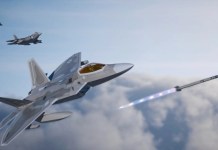The world’s most expensive fighter jet program – the Joint Strike Fighter or popularly known as the F-35, has again been found to be in deficit of funds according to a military’s independent cost analysis unit.
SAAB, The Makers of Gripen Jets To Equip German Navy With Anti-Ship Missiles
According to the sources, the pentagon’s framework for the next five fiscal years is planning to demand $78 billion for research and development, jet procurement, operations, and maintenance and logistics support structure dedicated to the F-35.
However, the cost analysis unit estimates the requirement to be of $88 billion- which means that the current request would fall short by $10 billion, reports Bloomberg.
The assessed setback was set out in a four-page survey dated June 17 marked “For Official Use Only.” The archive, gotten by Bloomberg News, gives the initial extensive cost-analysis estimate through 2077 for the Pentagon’s costliest weapons program since it went through a significant reorganization in 2012.
Going by the reports, the projected shortfall is “an issue to address” during the preparation of the next five-year defense budget plan, Pentagon spokesman Chris Sherwood said in an email.

“The department has a range of options regarding the F-35 program and will consider these issues,” he added. The shortfall “includes research and development, military construction, procurement and system operations and maintenance,” Sherwood said.
Termed as a ‘flying supercomputer’, the F-35’s total “lifecycle” cost is estimated to be $1,196.4 billion – in current dollar valuation. However, the Pentagon cost analysis unit also finds that “there remains uncertainty” about the plane’s long-term costs as it has flown only 2% of the threshold flight hours called for its life cycle.
The official report also calls on the government to take corrective steps to rectify a lack of sufficient data about the sustainment costs for the plane’s Pratt & Whitney engines.
Even being the costliest program, the plane’s cost has not increased as much as expected earlier due to reduced inflation and increase in foreign military sales.
“The reasons that aircraft procurement costs have dropped “remarkably” since 2012 include inflation that has been less than expected, an increase in foreign sales of 138 planes, or 18%, and contractor fees to Lockheed that were less than projected,” mentions Bloomberg.
It also reveals that the Pentagon’s ambitions to reduce the F-35’s per hour flight costs from $35,000 to $25,000 “is likely to prove unachievable” due to “a lack of defined actions” to reduce expenses.




